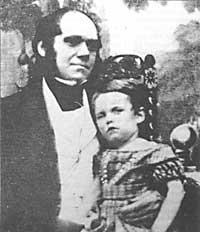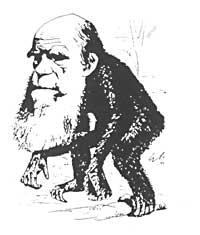Charles Darwin
Elhuyar Fundazioa
English naturalist born in Shrewsbury (Shropshire) on February 12, 1809. His father was a doctor and his grandfather Erasmus Darwin, a doctor and poet.
As a young man Charles Darwin did not stand out at all. He was first sent to study medicine, but did not show the tendency to this profession. He then tried to study theology in order to become an Anglican priest, but the priest's hobbies eventually disappeared, while the Natural Sciences prevailed.

In 1831 the ship named Beagle was ready to go round the world and on that trip of scientific research they offered Darwin a place to be a naturalist. Darwin's father did not want to let his son go, but his uncle Josiah Wedgwood participated in the lawsuit and Darwin ended up traveling the world on the Beagle boat. He suffered a lot at sea because he always dizzy. It is also possible for a condition called trypanosomasis to occur, as the chronic symptoms you later had in your life show this. However, Darwin made a complete five-year trip, undoubtedly the most important trip in the history of biology.
As he traveled along the South American coast, he observed that the species were gradually changing. For five weeks on the islands of the Galapagos archipelago, his animal research was the basis of his later theory.
Those volcanic islands, located about a thousand kilometers from the Ecuadorian coast, found giant turtles. However, some of its birds, the so-called txontas, were especially important. The txontes of those islands were similar but not equal. There were at least fourteen species, which differed somewhat from the song. To say that this type of txontes did not exist on the continent or anywhere else in the world and that they arose there with some special action of fourteen different species, did not seem reasonable. Darwin thought otherwise. As in the continent there were other species similar to these txontas, the islands that would colonize them and then the descendants would adopt different forms thanks to evolution.
Later evolution was not known to Darwin when the trip ended in 1836. Upon returning to England he prepared a naturalistic book on the trip and another on coral reefs. He suggested that reefs emerged from the accumulation of coral skeletons, while they could descend the seabed. This theory was very successful.
In 1839 Darwin married his cousin Emma Wedgwood. There he was secretary of the Geological Society.
Darwin had already read Malthus's famous book on the population. According to him, the number of human beings was reproducing faster than food and in the end the population would have to be reduced by hunger, evil or war.

Darwin thought to apply this idea to any being. The first to be destroyed would be the least advantageous in food competition. In the Galapagos Islands, for example, the most appropriate txontas to look for and eat seeds would last and the others would die. But what if some txontas had bigger seeds or could eat insects? Those who had this new capacity would remain and the others would disappear. Nature, by natural selection, would select some species, excluding others. Darwin realized that selection was the main reason for explaining evolution.
Darwin spent many years working on his theory and collecting data as evidence. His friends knew what he was doing and as the idea of evolution was increasingly heard among biologists, his friend geologist Lyell asked him to publish a book. In addition, naturalist Alfred Wallace had just written a work with ideas similar to those of Darwin.
In the journal of the “Linnaean Society” an article by Wallace and Darwin on the theory of evolution was published in 1858. However, in 1859 he published his most famous book: On the Origin of Species. All books were sold out on the day of publication and subsequent reeditions were purchased immediately.
Nothing more than Darwin published the book opened up a long debate. Some thought that Darwin's theory contradicted what the Bible said, which was perishable to religion. Darwin did not directly apply evolutionary theory to human beings in his book, but readers related what he said about plants and animals to the origin of human beings.
The controversies between scientists and non-scientists lasted for years, but Darwin did not participate directly in them. He continued to collect data and evidence, publishing in 1871 the book The Descent of Man.
Darwin died on April 19, 1882 in the town of Down in London, but the debate had already gone a long way through his evolutionary theory of natural selection and was buried as a famous character at Westminster Abbey, alongside Newton, Faraday and his friend Lyell.





